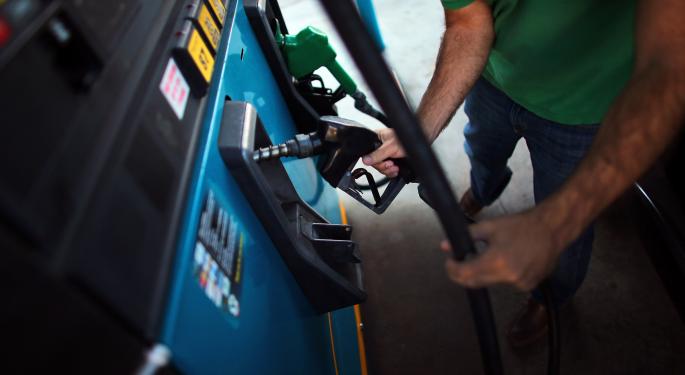GasBuddy: U.S. Motorists Will Save $97 Billion In 2015
GasBuddy.com just released its fuel price outlook for 2015 and the news for motorists is nothing short of spectacular.
For the year, GasBuddy projects the average price for gasoline in the U.S. will be $2.64.
“Toward the end of 2014, the market showed bountiful supply, strong production, and not enough demand to suck up the inventory,” said GasBuddy Petroleum Analyst, Allison Mac.
According to Mac, many of these factors would carry over into 2015.
“Once again, the $2 sign will become a familiar number to see on street corners,” she added.
Bigger Savings To Come
If GasBuddy’s forecast pans out, drivers will save $97 billion in 2015 compared to 2014.
With an estimated 253 million cars and trucks on America’s highways, the annual savings amounts to $383 per vehicle.
“As much [as] we were thrilled by $2.99 gas at Thanksgiving time, we now enjoy $1.99 gas in many places,” said GasBuddy Senior Petroleum Analyst, Patrick DeHaan.
“I fully expect we’ll soon become complacent with those $2.99 prices once these sub - $2 prices stick around a bit longer,” DeHaan added.
Average Gas Prices By Season
Of course, gasoline prices change frequently and with the season. GasBuddy’s forecast has called for a low national-average, price per gallon of $2.36 in January 2015, eventually rising to a high of $3.00 in May.
Beginning in June, gasoline prices are expected to slowly decline to a December average of $2.39 per gallon.
Peak Gasoline Prices
Looking at a group of selected cities, GasBuddy said it believed prices would peak at about $3.70 per gallon in San Francisco. The lowest prices in that city are expected to hover around $3.45 per gallon during the year.
Prices in other cities included Detroit, expected to range between $2.75 and $3.05 in 2015 and St. Louis, expected to show a swing between $2.65 and $2.95 throughout the year.
The Caveats
“What occurred in 2014 was nothing short of a paradigm shift in favor of North American energy producers and consumers, at the expense of OPEC and the Middle East,” said GasBuddy Senior Petroleum Analyst, Gregg Laskoski.
That said, the keyword when it comes to fuel price forecasting is “volatility.”
OPEC could change its mind about cutting oil prices in an attempt to regain market share. That could affect gasoline prices dramatically.
Refinery maintenance and the switchover to summer fuel blends traditionally causes an increase of $0.35 to $0.75 per gallon. Unexpected glitches in that process could affect gas prices.
Two other factors – weather and gasoline taxes – also have the potential to throw a monkey wrench into GasBuddy’s forecast.
All That And No Recession
Looking back, lower gasoline prices happened as a matter of course in 2008. According to DeHaan, this time it’s different.
“While we continue making comparisons of today’s gas prices to the Great Recession, the biggest factor this time around is the absence of such an economic slowdown, making the drop in gasoline prices exponentially better this time around,” DeHaan said.
At the time of this writing, Jim Probasco had no position in any mentioned securities.
© 2025 Benzinga.com. Benzinga does not provide investment advice. All rights reserved.
Posted-In: Allison Mac GasBuddy Great Recession Gregg LaskoskiTravel Top Stories Economics General Best of Benzinga



